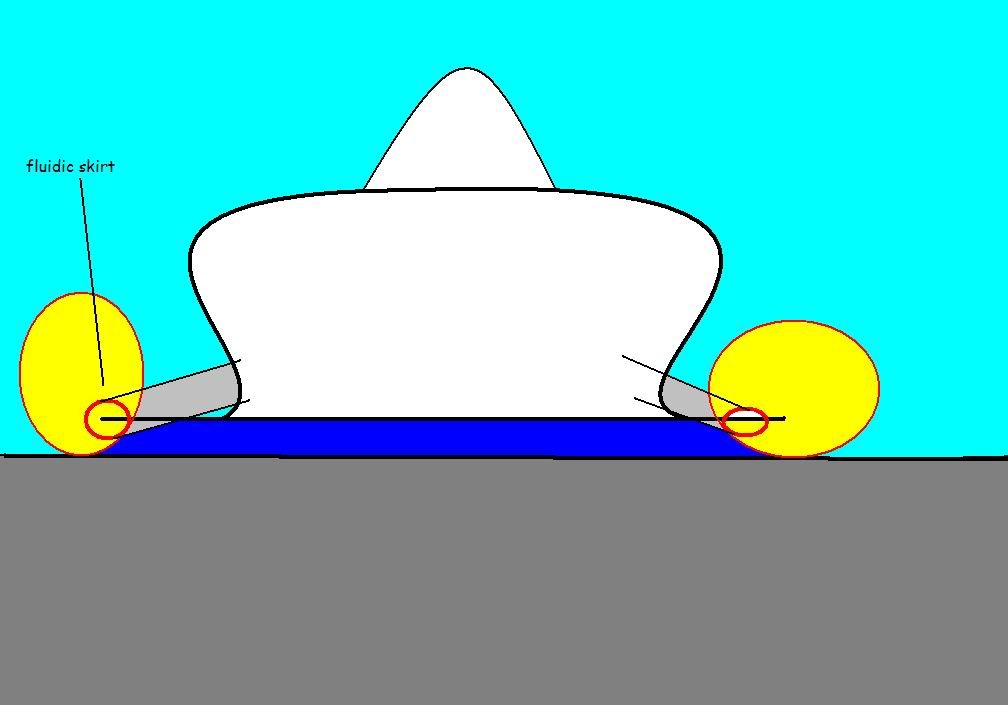Looks like Renault has a problem, a big one.
Anyways as far as i remember Kubica said they will search progress at Valencia, not speed.
- Login or Register
No account yet? Sign up



Could you explain more about how this works? Side skirts are for stopping flow coming in from the sides, but these are pumping sideways from the front. I don't think restricting the flow entering from the front is beneficial.kilcoo316 wrote:
Yep, your spot on, that is what they are trying to do (mimic the effect of skirts).
Another possibility is pointing the exhausts outboard at around the splitter location, in an attempt to better "seal" off the floor of the car; think fluidic sideskirts.
Looks like his initial guess of how the system was laid out was a bit wrong, the exhaust point outwards, not down. But it might be more complex than that, we just don't know yet and it seems like they can have hidden quite a bit there..myurr wrote:Scarbs has another explanation on his blog. Apparently this is about energising the flow under the floor rather than sealing the sides.


I think they are surmising that it won't stay at high pressure for very long. I suspect the pressure will drop off rapidly once the gas has left the exhaust and started mixing with the external flow. As long as the temperature stays high then it should work, I reckon.ringo wrote:Blowing it under the car is not the right idea. That is wrong.
High pressure air belongs on top of the floor.

Whether the exhaust gases are used to seal the floor from the side or create a local low pressure zone to accelerate additional airflow under the car (or both) and assuming this has a reasonable effect on downforce, the car will be somewhat throttle dependent in high speed corners. Considering how much overall downforce is resultant from the underbody...I'm curious what the drivers will have to say.ringo wrote:I was expecting something like this:
The exhuast creates a wall screen off free stream air from going under the floor.
Thus sealing the floor and creating a fluidic skirt. I mentioned it a few pages back, but i never though they would try it.
The only problem is getting the pipes to the edges of the floor, and the effect of the tyres.
They seem to have put most of the exhaust over the floor though, just a sliver of it is blowing under the edges to act as a seal.
The idea is novel, but too many drawbacks; weaker engine, heavier exhuast pipes, more weight from thermal protection, wasted space useful for placing heavier things besides a hollow pip full of hot air.
If it works for them then no problem.


They can overcome it partially with ignition retardation providing somehow constant flow.slimjim8201 wrote:Whether the exhaust gases are used to seal the floor from the side or create a local low pressure zone to accelerate additional airflow under the car (or both) and assuming this has a reasonable effect on downforce, the car will be somewhat throttle dependent in high speed corners.
I don't quite get the physics of this. Surely the exhaust gas will mix and dissipate, especially if it is initially at high pressure? Would this system be much better than just using vortex generators, for instance?ringo wrote:The exhuast creates a wall screen off free stream air from going under the floor.
Again, It looks more 50/50 to me:ringo wrote:They seem to have put most of the exhaust over the floor though, just a sliver of it is blowing under the edges to act as a seal.

I really think having higher temperature air under the floor is beneficial for reasons similar to this. If you can keep the boundary layer energised all the way to the diffuser opening then your floor should be working more efficiently I would say. Like Ringo says though, you need to avoid effectively pressurising the floor with the exhaust which is maybe why it seems to be split.n smikle wrote:Maybe they skim the exhaust air. Some of it is skimmed off into the boundary layer under the floor, enabling them to run a steeper rake and a steeper diffuser.